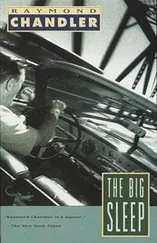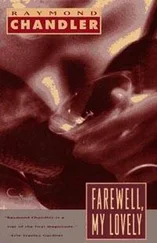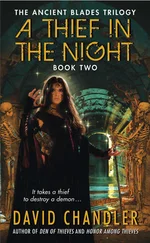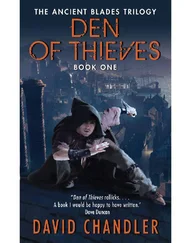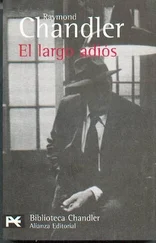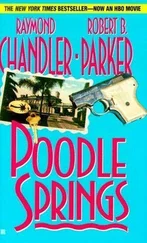This book has also profited by conversations in the most literal sense of the term with many friends and colleagues over the years. At Chicago, I would like to salute Tim Campbell, Dipesh Chakrabarty, Maud Ellmann, Frances Ferguson, Norma Field, Berthold Hoeckner, Patrick Jagoda, Heather Keenleyside, Jo McDonagh, Rochona Majumdar, Françoise Meltzer, Tom Mitchell, Dan Morgan, Richard Neer, Debbie Nelson, Salomé Aguilera Skvirsky, Jacqueline Stewart, Ken Warren, Lisa Wedeen, David Wellbery, John Wilkinson, and the late Marshall Sahlins. At Chicago, too, I was able to teach courses related to the topics of this book to the most intellectually committed students imaginable—courses on film and fiction, Irish literature and cinema, literary typologies, satire, melodrama, the literature of empire, media aesthetics, and, to be sure, Romanticism. It was a great boon to co-teach some of these courses with such talented colleagues as Martha Feldman, Jennifer Pitts, and Christiane Frye. Beyond Chicago, I wish to acknowledge colleagues whose learning and critical acumen I have come to depend on: Dudley Andrew, Ian Baucom, Homi Bhabha, Bradin Cormack, Peter de Bolla, Ian Duncan, Penny Fielding, Debjani Ganguly, Luke Gibbons, Sara Guyer, Paul Hamilton, Bill Keach, Margaret Kelleher, Rashid Khalidi, Declan Kiberd, Nigel Leask, Sandra Macpherson, Simon Schaffer, Laurie Shannon, Vincent Sherry, Ron Thomas, Domietta Torlasco, Katie Trumpener, and Clair Wills. I will sorely miss my conversations about criticism over the years with the late Seamus Deane in the bar of Dublin’s Shelbourne Hotel. Beyond the academy, I have enjoyed discussing films, over Zoom during the pandemic, with the brainy Hyde Park Film Group, who have helped me to imagine how to broaden the reach of this book. It was Iain McCalman who encouraged me to try such a book in the first place, though he is unsurpassed in his ability to craft one.
Very special thanks are due to that “fit audience … though few” who read and commented on the entire manuscript once it was drafted. This generous crew includes two press readers, Deidre Lynch and Garrett Stewart, as well as Claire Connolly and Joseph Bitney. Together they saved me from errors large and small and decidedly improved the book overall. My friend Bill Brown, alas, was unable to read a full draft of this book, as he has so generously done for me in the past, but he did offer some shrewd advice about it, for which I am all the more grateful in the circumstances. My thanks go to Allyson Field and Michael Chandler for giving me the benefit of their considerable wisdom on the Spike Lee chapter. Eleni Towns did a timely bit of archival work for me on that same chapter. Catherine Chandler helped with matters of tone and tact, and her sons, Jack and Sam, have been a constant reminder of what it means to live and learn with what the great critic William Hazlitt called gusto . Elizabeth Chandler, beyond everything else, read and listened to much of this book, and assessed a number of key passages for clarity. Her judgments were unfailingly helpful. I’ve learned most intimately about doing criticism from the teaching and generosity of four scholars (only one officially my teacher): in literary studies, Jerome McGann and the late Marilyn Butler; in film studies, Tom Gunning and the late Miriam Hansen. To them as well, as the poet wrote, “I may have owed another gift”: the example of how to take real pleasure in such work. This book is dedicated to my students at the University of Chicago, from whom I have learned much about criticism, to be sure, but also, especially in recent years, about resilience in the face of challenging times for the humanities. Many have succeeded in becoming the teachers of others, some the authors of books of their own, but the pride I take in all of their accomplishments is both enormous and unwarranted.
I was invited to rehearse some of the arguments and commentaries of this book publicly in a variety of venues. Among them I wish to acknowledge the CRASSH Center at Cambridge; the Humanities Research Center at the Australian National University; the Glasscock Center at Texas A&M; the University of Iowa; the University of Cardiff; Yale University; Chawton House; the University of California, Berkeley; the University of Pennsylvania; Northwestern University; Princeton University; Trinity College Dublin; and the Paris Center of the University of Chicago. It was particularly helpful to deliver a version of Chapter 1as the plenary address to a large public audience for Humanities Day at Chicago some years ago. I thank my hosts for these opportunities, and the audiences for some searching questions. Thanks, too, to Deans Martha Roth and Anne Robertson for granting the research time to complete this book. I should add that it consists almost entirely of previously unpublished material, but a version of my discussion of Seamus Heaney’s “Casualty” appeared in Critical Inquiry 41 (Winter 2015). At Wiley-Blackwell, I have worked with many editors and members of staff, from Emma Bennett, who first commissioned the book, to Liz Wingett, who saw it through the press. I thank them all for their flexibility and professionalism. Last by not least, Eric Powell, my research assistant, logged hundreds of hours on this book in the course of both my researching it and preparing it for publication. The book owes a great deal to his meticulous work on it.
PART I CRITICAL ISSUES
CHAPTER 1 Doing Criticism/Doing without Criticism
1.1 Functions of Criticism
Our word criticism comes from an ancient Greek word ( krinein ) meaning both to separate and to judge. Those two ideas, connected as they are, provide a usable working definition for most purposes. To see the intimate connection between discrimination and evaluation in the critical act, consider the anecdote offered by eighteenth-century philosopher David Hume in an essay that explains criticism in philosophical terms. The story is one that Hume himself borrowed from Cervantes’ Don Quixote , and it is told by Sancho Panza about his kinsmen, who were reputed to be great judges of wine.
Two of my kinsmen were once called to give their opinion of a hogshead, which was supposed to be excellent, being old and of a good vintage. One of them tastes it; considers it, and after mature reflection pronounces the wine to be good, were it not for a small taste of leather, which he perceived in it. The other, after using the same precautions, gives also his verdict in favour of the wine; but with the reserve of a taste of iron, which he could easily distinguish. You cannot imagine how much they were both ridiculed for their judgment. But who laughed in the end? On emptying the hogshead, there was found at the bottom, an old key with a leathern thong tied to it. 1
Hume, whose Greek was very good, means us to understand by this story that analytic competence—the capacity to distinguish the elements in a composition—supports evaluative authority. Assessing the quality of something requires discerning its separate qualities . This is why Aristotle, in the Poetics , broke Greek tragedy down to its six component parts and, in judging some tragedies better than others, analytically isolated special kinds of moments (like reversal and discovery). The relationship between analysis and judgment was crucial to his pioneering efforts in criticism.
Criticism has sometimes been accused of pressing too hard with its analytic tasks and of coming down too hard with its judgments. The poet Wordsworth hints as much, with some irony, when he has one of his characters exclaim: “we murder to dissect.” 2The American critic Wayne Booth once even turned this worry into a witty question: “Must Critics Kill?” 3These days the news is more likely to be about the demise of criticism itself, though there is reason to wonder about what that might mean. One guiding question for this book about doing criticism, indeed, is what to make of the thought that we might do without it. The question is not an idle one, for such a prospect has not long ago been raised by Ronan McDonald in The Death of the Critic (2005)—though he raised it in the context of a defense of criticism. There was a time when only cultural conservatives made such defenses. Yet recently, even a left-leaning cultural warrior like the Shakespearean Marjorie Garber advocated reviving criticism in her book The Use and Abuse of Literature (2011), proposing a method she calls “centripetal” reading. 4Or consider the unlikely testimony of literary theorist Terry Eagleton, who now laments the near extinction of an intellectual practice that he sees as formative in his own career: “Like thatching, or clog dancing,” writes the Irish-Briton Eagleton, “literary criticism seems to be something of a dying art.” It has been dying, he explains, for at least two academic generations: students don’t learn it because their teachers don’t teach it, not having been taught themselves. In a moment of candor, Eagleton acknowledges that “the charge may seem pretty rich, coming as it does from a literary theorist,” adding: “Wasn’t it literary theory, with its soulless abstractions and vacuous generalities, which destroyed the habit of close reading in the first place?” 5The question, one suspects, is tongue-in-cheek.
Читать дальше

